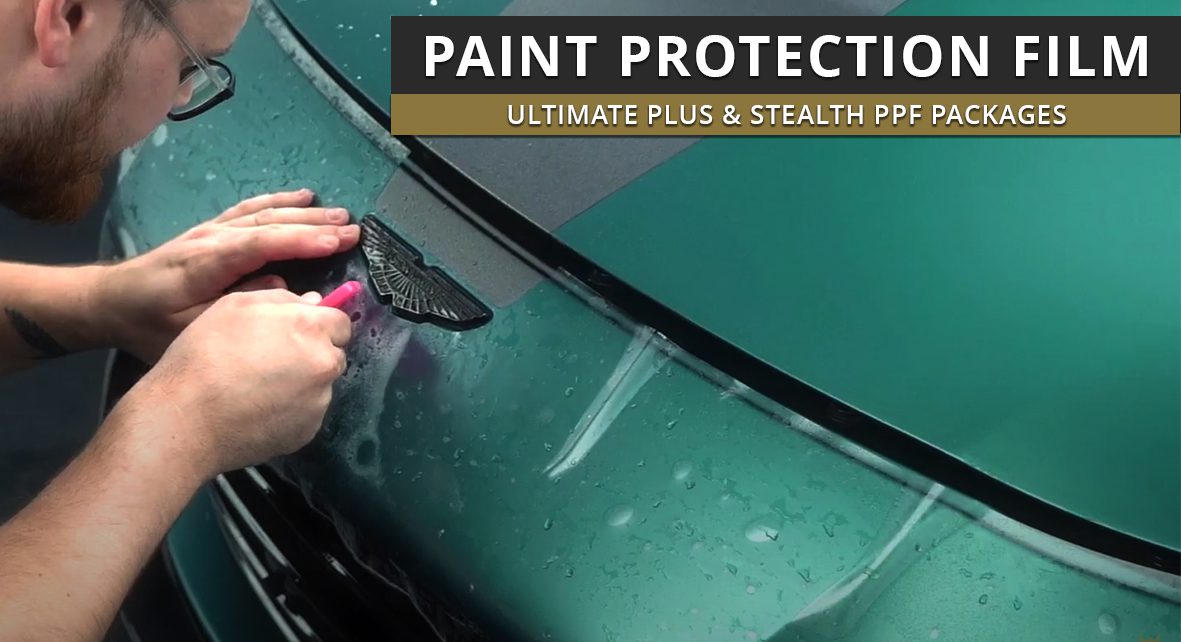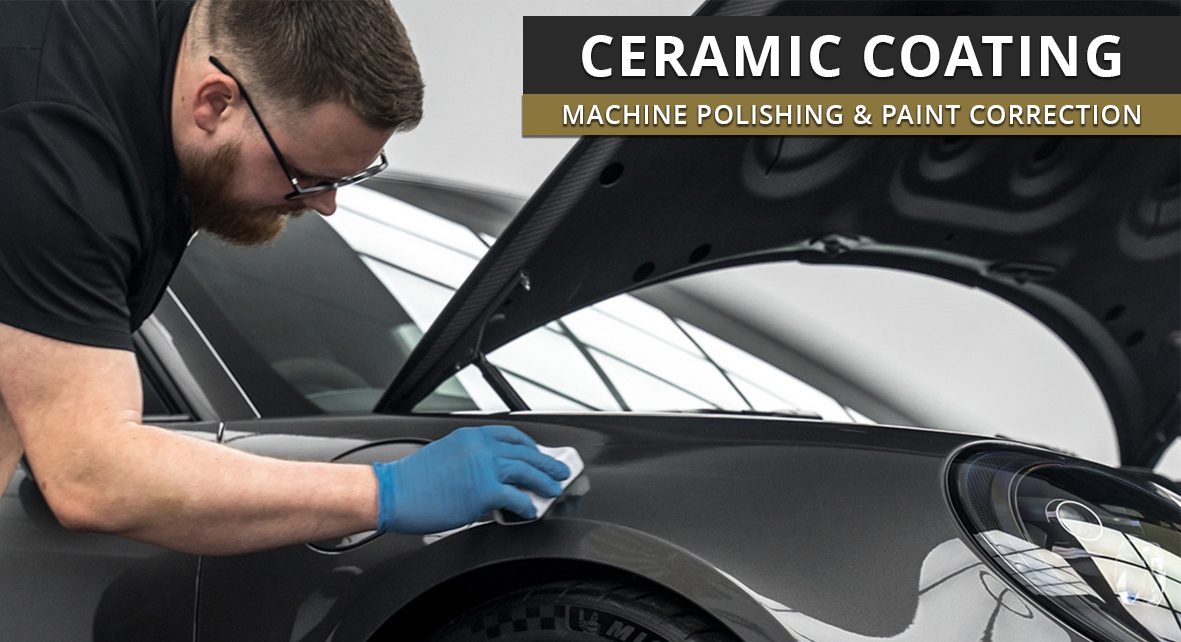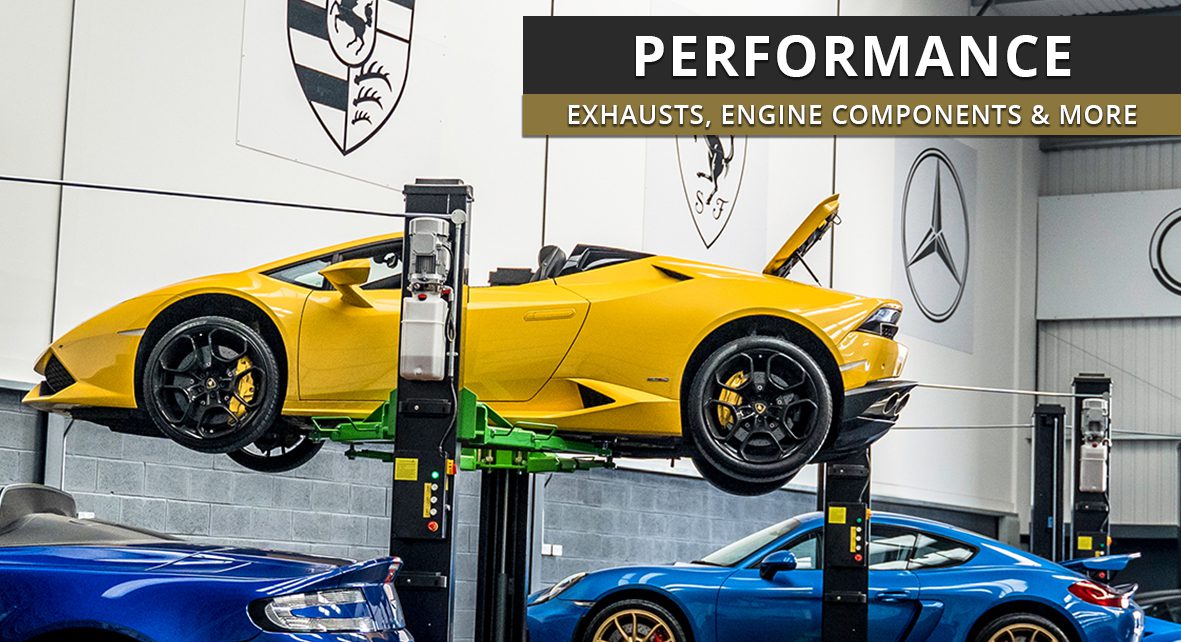Eventuri Audi Rs3 2.5 Tfsi Full Black Carbon Fibre Intake Gen1
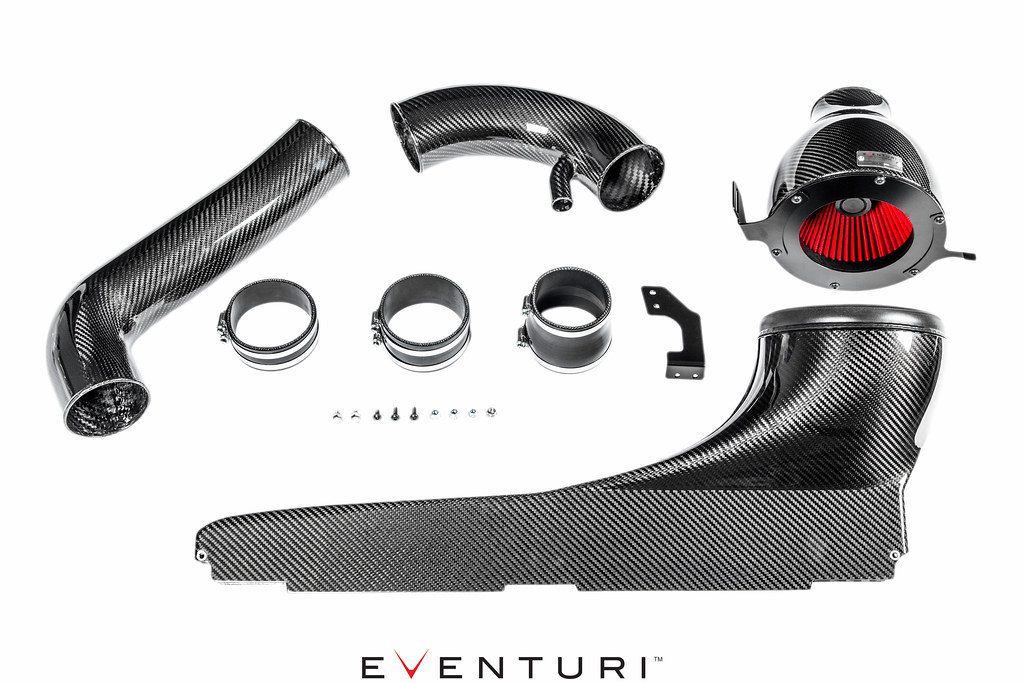

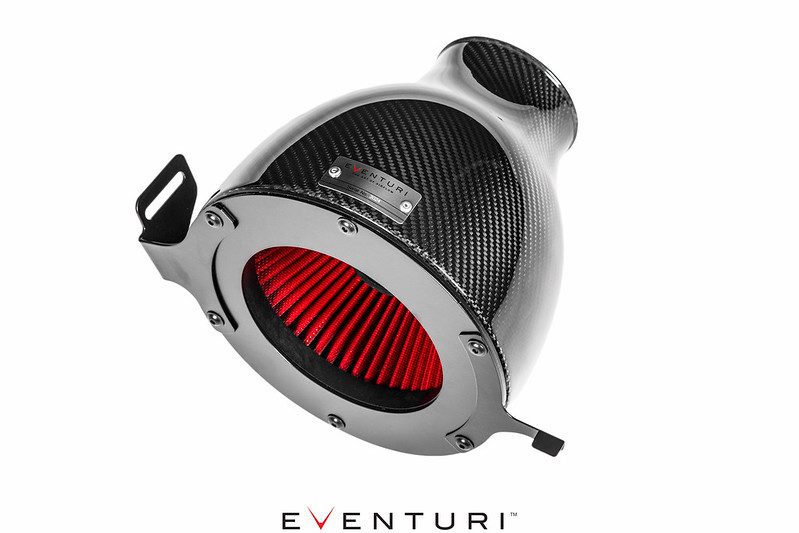

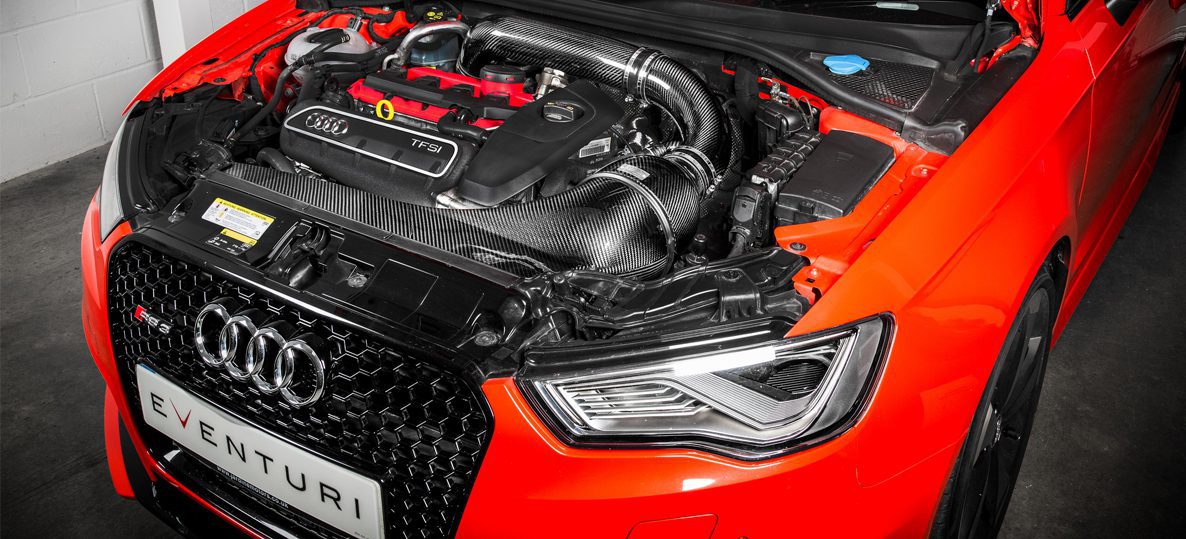

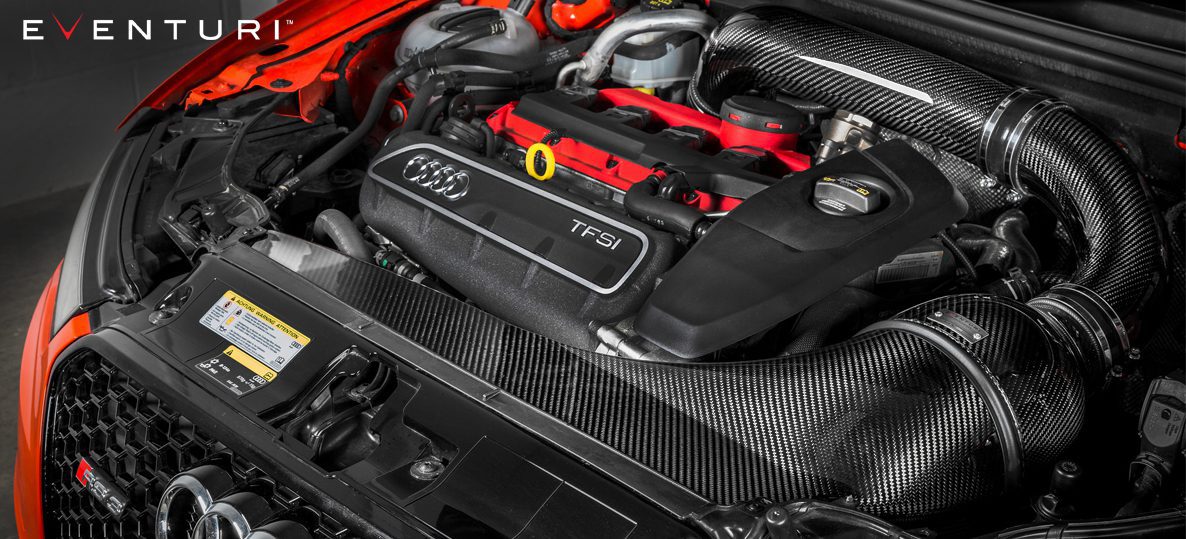

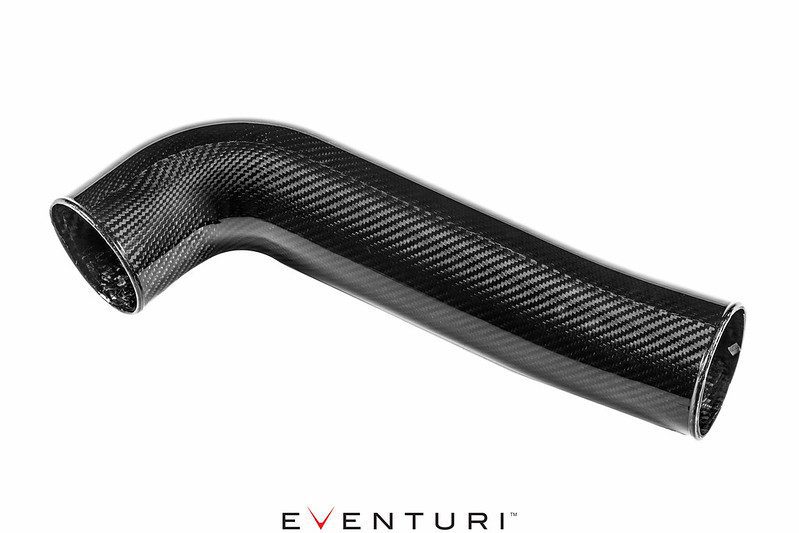

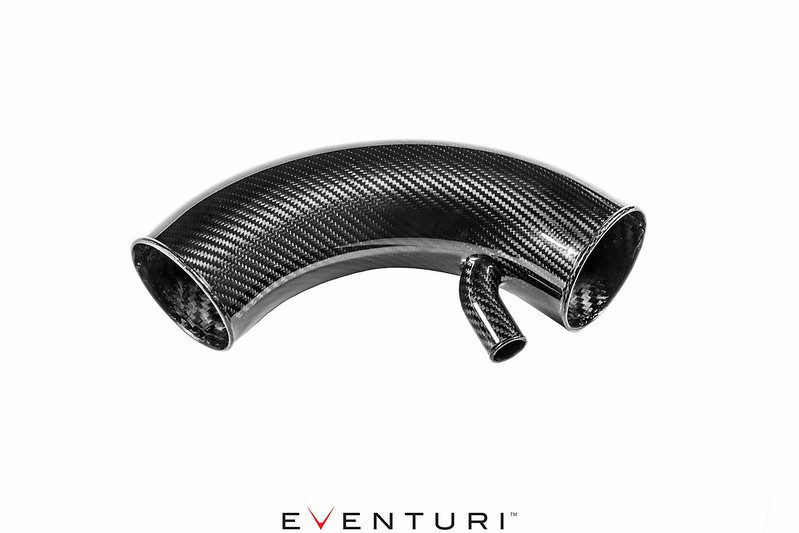

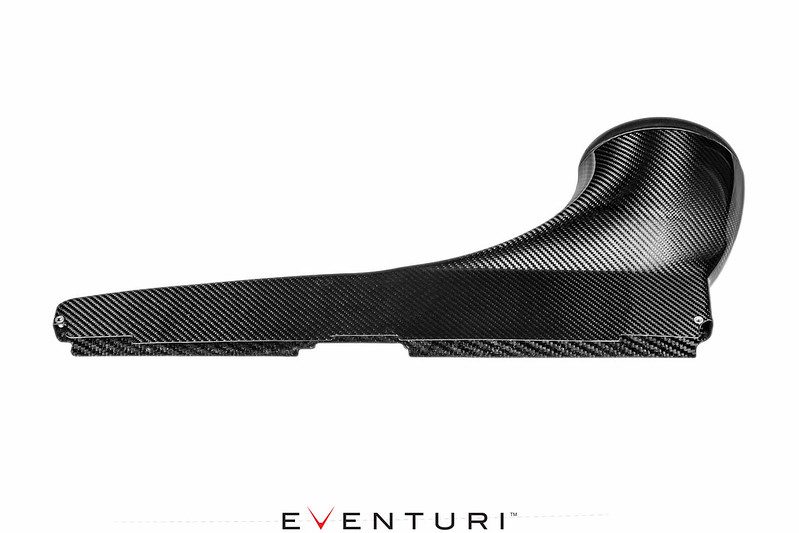

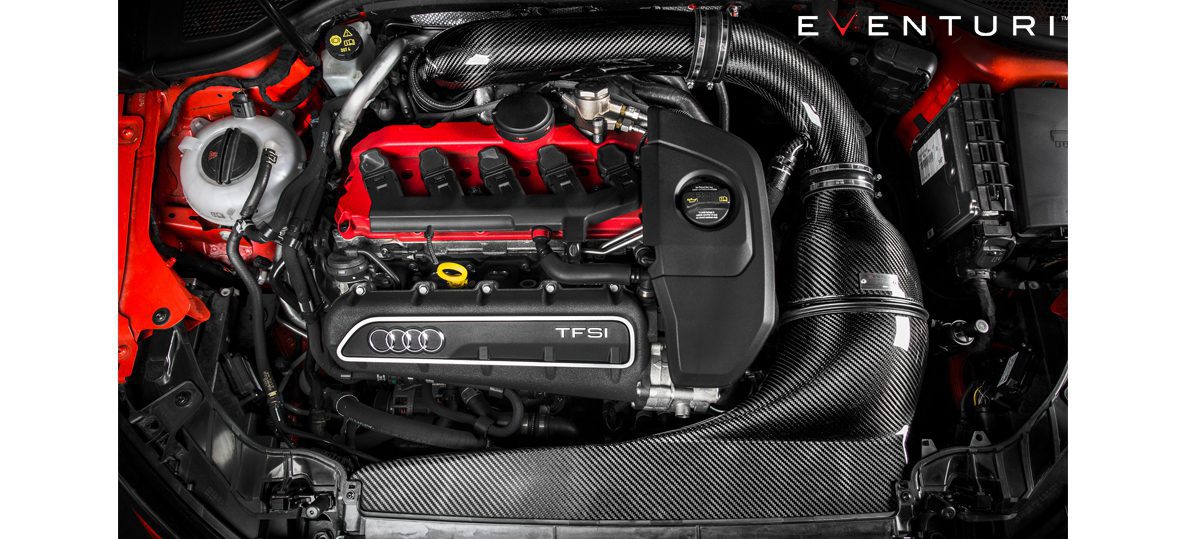

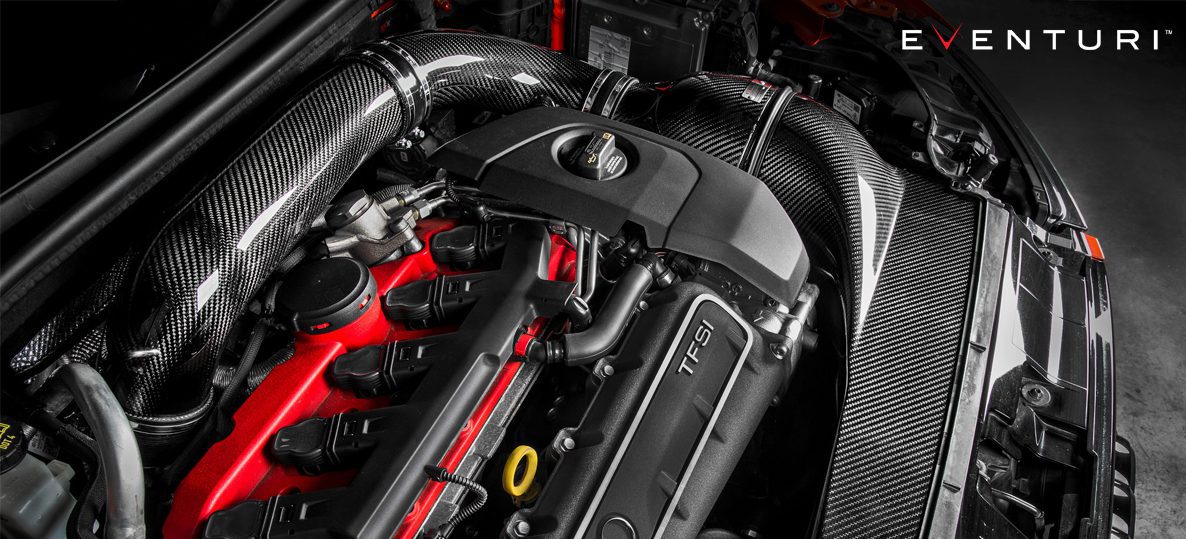

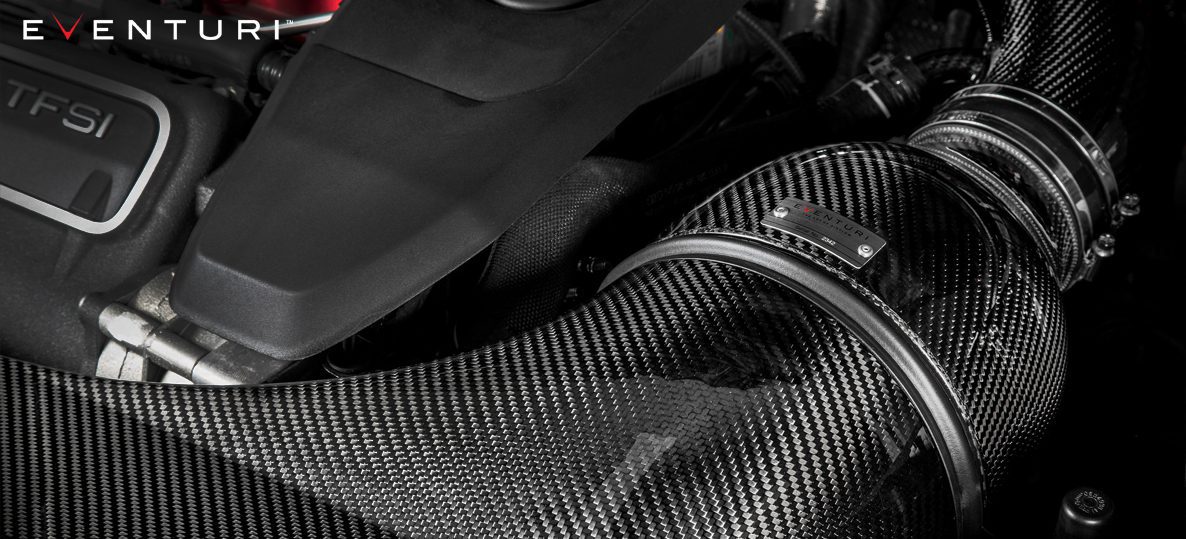

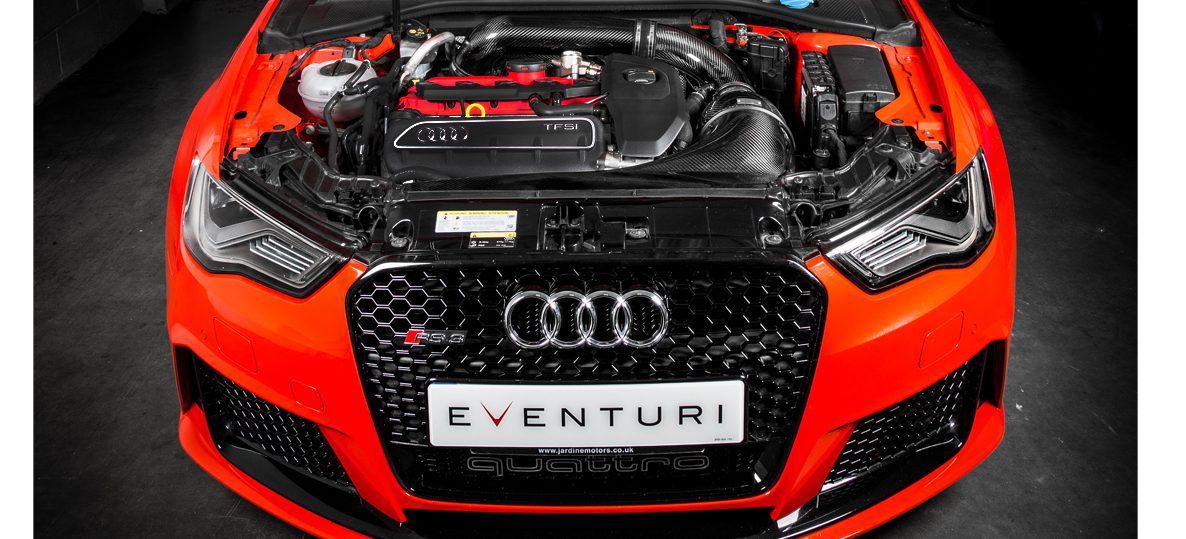

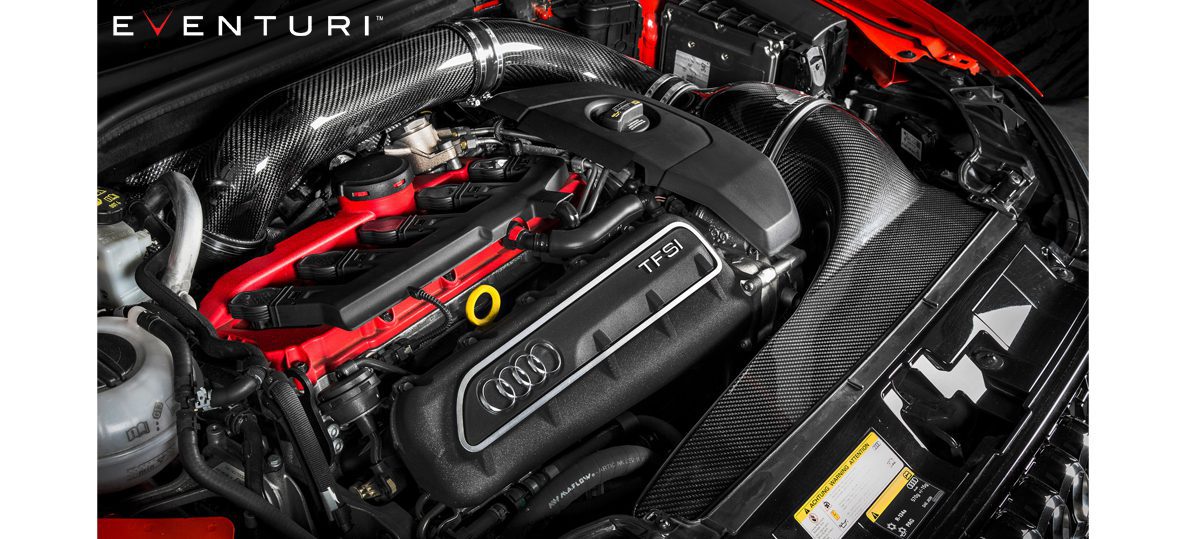

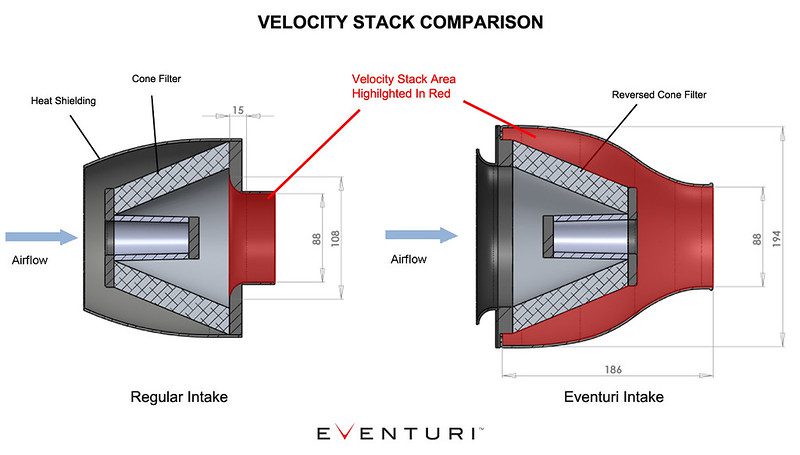

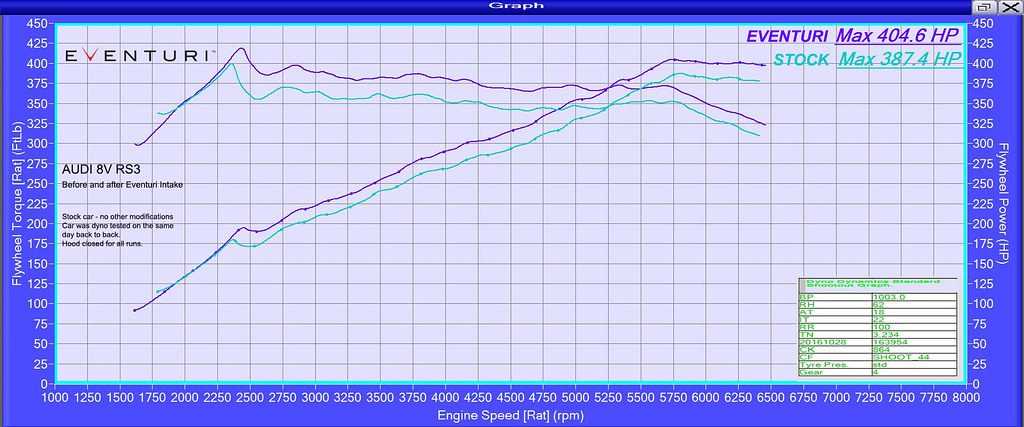

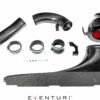

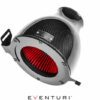

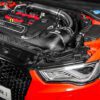

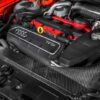

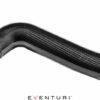

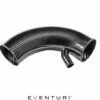

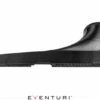

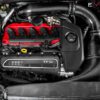

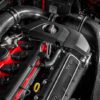

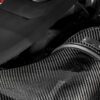



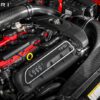

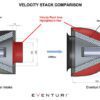



Fitting Details
- INSTALLATION AVAILABLE
AUDI 8V RS3 GEN 1
Performance Gain: 17-20hp, 22-25ft-lb
V-Box Acceleration : 60-130mph Reduced By 0.3 Seconds
The Audi 8V RS3 Eventuri intake sets a new benchmark in aftermarket intake design for this platform. It was developed to achieve two objectives – 1) De-restrict the turbo inlet path. 2) Maintain low inlet temperatures. The first objective was met by using 88mm internal diameter tubing all the way to the turbo as well as using our unique Venturi housing to maintain laminar flow. The second objective was met by designing a sealed system to the stock cold air feed therefore ensuring the turbo does not draw heated air from the engine bay. The intake duct draws air from the stock feed and has been maximised in volume to allow the highest flow rate through the filter. The resulting performance gains and aesthetics are industry leading for the 8V RS3.
The Eventuri Difference
The 8V RS3 Eventuri system uses our Patent Pending Carbon fibre Housings which provide an aerodynamically efficient airflow path from the filter to the turbo tubing. Not just another cone filter with a heat shield but a unique design which invokes the Venturi affect.
Performance
Extensive testing was carried out on this system both on the Dyno and road. Firstly the dyno tests were carried out showing an impressive gain of approximately 17hp and 25ft-lb of torque. The gain is not just at the peak but throughout the RPM range. This translates on the road to increased part throttle and full throttle response with the car pulling much more eagerly to the redline. The testing was done on the same day back-to-back and temperatures were monitored to ensure consistency. The car was tested firstly with the stock intake – hood closed. We then left the car on the dyno and installed the Eventuri. The car was then run again – hood closed. Several runs were carried out with both configurations to get a consistent result.
We then took the car for some road testing using a Vbox unit to record the acceleration from 60-130mph (also 100-200Km/h). Testing was carried out on the same stretch of road – again on the same day to keep variables minimum. Results show that with just the intake added, the acceleration times from 60-130mph and also 100-200Km/h reduced by approximately 0.3 seconds which is a significant change at such speeds.
Acceleration results summary:
60-130mph with Stock intake = 12.013 seconds
60-130mph with Eventuri intake = 11.753 seconds
100-200Km/h with Stock intake = 10.271 seconds
100-200Km/h with Eventuri intake = 10.046 seconds
The gains are from a combination of reasons:
1) The sealed system keeps IATs low – the RS3 engine bay can get heat soaked very quickly so an open cone filter will cause an increase in IAT values resulting in a loss of performance.
2) The Venturi housing provides a smooth transition from the filter to the intake tubes which are both matched to an internal diameter of 88mm. This helps the turbo to run more efficiently.
3) The entire system is constructed from pure pre-preg carbon fibre which is great at insulating from heat.
Product Info
Part Numbers:
EVE-8VRS3-CF-RHD-INT : Audi 8V RS3 RHD Full Black Carbon intake Gen 1
The Eventuri 8V RS3 intake system consists of a number of components engineered to perform a specific purpose and fabricated to the highest of standards. Here are the details for each component and the design ethos behind them:
Each intake system consists of:
Carbon Fibre Venturi Filter Housing
High Flow Urethane Cone Filters
Carbon Fibre inlet Duct
Carbon Fibre Turbo Tube
Carbon Fibre Connecting Tube
Laser Cut Stainless Steel Brackets
Silicon Couplers and Reducer
Carbon Intake Housing Assembly
The filter housing comprises of a high flow filter, aluminium cowl, laser cut brackets and the carbon pod itself. The carbon pods shroud the reverse mounted filter and smoothly shape the airflow down to the intake tubes. This smooth reduction in cross sectional area invokes the Venturi effect where the airflow accelerates whilst maintaining laminar conditions. It can be thought of as a large velocity stack – below is a diagram to show the comparison between our patent pending design and a regular intake system.
Carbon Fibre Intake Duct
The duct channels ambient air from the slam panel area to the filter housing. It fits inside the OEM ducting system and smoothly transitions to the circular filter housing shape. In order to ensure a good seal against engine bay heat – it also has a flexible rubber edging around the opening which presses against the filter housings creating the desired seal yet allowing the housing to move with the engine. The duct was designed to have the maximum internal volume possible within the given geometry of the engine bay. This ensures that the filter housing is able to draw with minimum restriction.
Carbon Fibre Intake Tubes
Our intake tubes are again crafted from 100% prepreg carbon fibre. Each tube has an internal diameter of 88mm – the stock tubing is just 77mm in diameter. This enlarged diameter allows the turbo to operate with less restriction and also allows larger/hybrid turbos to run even better. The tubes smoothly carry the airflow to the turbo by ensuring there are no sharp or sudden bends. The smooth bend geometry ensures laminar flow is maintained from the filters to the exits.
The combined system ensures that airflow remains full and consistent to the turbo – minimising the occurrence of turbulence. The following flow simulation shows how smooth and full the flow is within the inlet tubes before the turbo. There is some circulation in the duct as is expected but once the flow enters the tubing, this is smoothed out and allows the turbo to operate more efficiently.
£1,500.00
Out of stock
ASSETTI PRODUCTS AND SERVICES
BENEFITS OF
PPF
XPEL CERTIFIED INSTALLER


No More stone chips
Say goodbye to stone chips with XPEL PPF. The film protects the paint with a sacrificial layer which is resistant to chips and damage from debris.


ULTIMATE PROTECTION
Peace of mind that your vehicle can handle whatever the road throws at it when protected with PPF, from stone chips to bird stains PPF can protect from it all.


EASY MAINTENANCE
Keep your vehicle cleaner for longer! PPF is easier to maintain than paint thanks to it's hydrophobic properties ensuring your vehicle looks better for longer.


SELF HEALING
No more swirl marks. PPF has a self healing top coat which is resistant to light scratches and swirls. Simply park the car in the sun and watch any swirl marks fade away.

